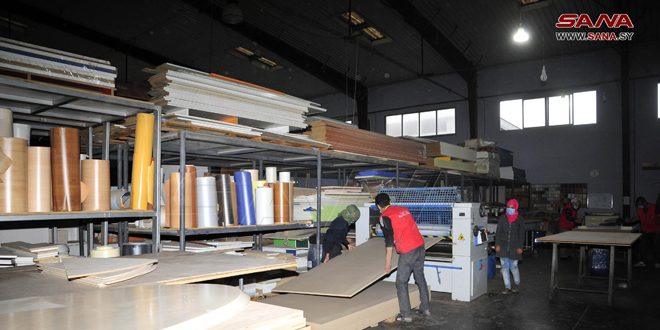Khallouf pointed out that the industrial zone in Al-Otaiba is ready for investment, and the number of plots designated for it exceeds 110. The full infrastructure is available in it, and the owners of the establishments are preparing to construct buildings in them. A project to open streets and remove rubble in the Otaya area has been implemented at a value of 150 million pounds including the studies of sewage, water and electricity projects.
Regarding the industrial zone in Harran Al-Awamid, Khallouf pointed out that the roads opened, and during this year the implementation of its infrastructure, which extends over an area of 150 hectares, will begin, stressing that it accommodates all the crafts and industries present there.
Khallouf mentioned that there is a study to asphalt some streets and side lanes and maintain sanitation in the industrial area of Sehnaya, which extends over an area of 116 hectares and includes 110 large, medium and small industrial facilities.
The rehabilitation and restoration of the facilities damaged as a result of terrorism in Harasta industrial zone, which amount to about a hundred small, medium and large facilities, has been started by their owners, and the streets were opened and the rubble was removed.
Regarding the 400-hectare industrial zone in Khirbet al-Shayyab, Khallouf confirmed that it will be offered for partnership with the private sector.
Regarding the industrial zones in the town of Adra al-Balad, Jassem al-Mahmoud, deputy head of the executive office in Damascus Countryside Governorate, pointed out that there are three industrial zones in the town that have been established according to certified organizational schemes, and that employ about 5 thousand workers, including in food, chemical, plastic, metal, paint, ceramic, detergent, leather, heaters and other industries.
Jassem explained that the first zone is located in the town of Al-Thanaya and includes 17 factories, while the second industrial zone includes about 110 industrial facilities and workshops for repairing vehicles. The third industrial zone is still under rehabilitation, as the infrastructure of the majority of its facilities, which are about 40, have been damaged by 10 percent.
NR

